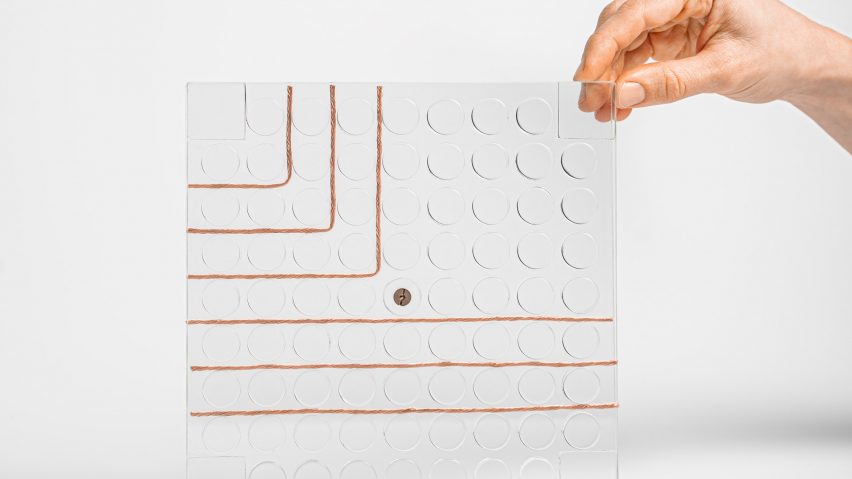
Lund University students cast household items in glass instead of plastic
Contact lens cases, vegetable vases and pill packets are some glass objects by students at Lund University in Sweden to explore how the reusable could help the transition to a circular economy.
The resulting 31 designs were presented at the Stockholm Furniture & Light Fair as part of an exhibition called Transparent.
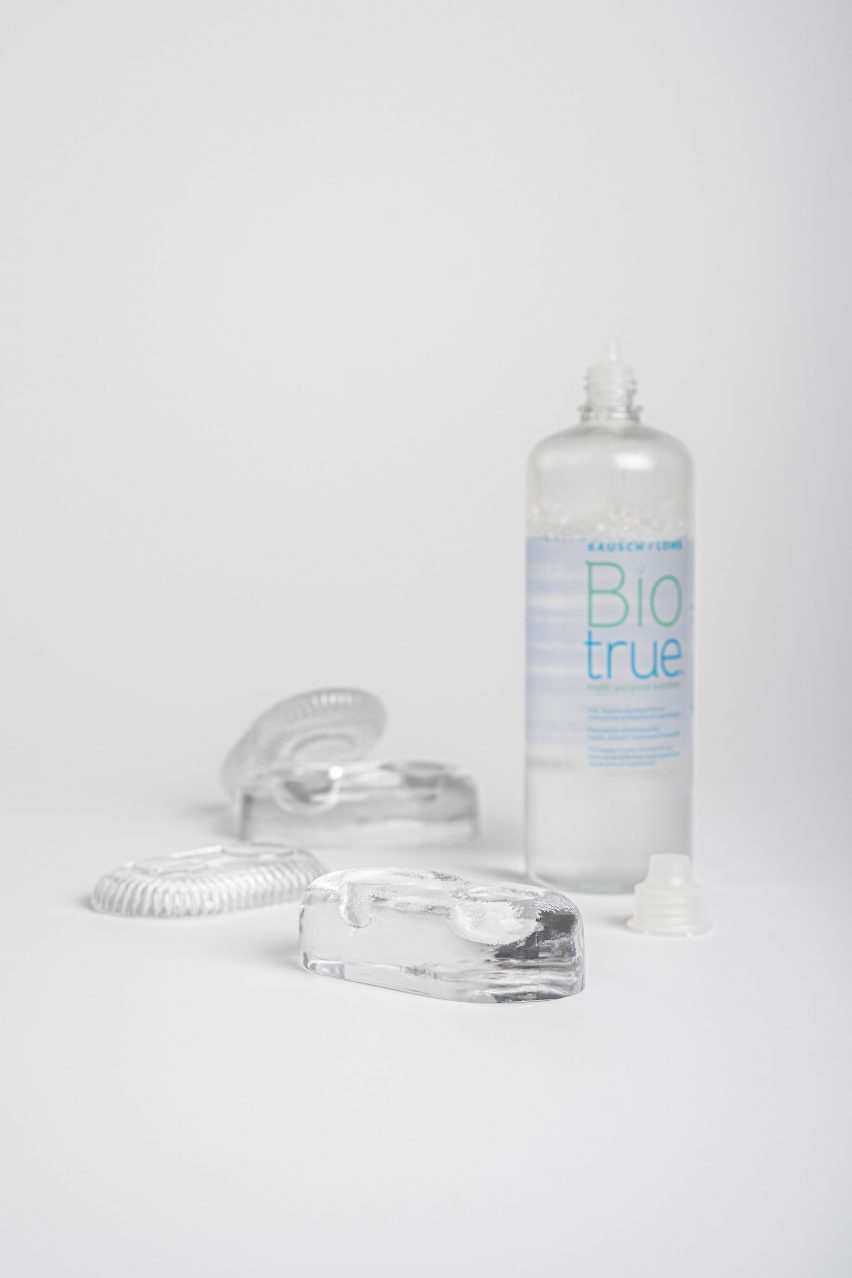
Items ranging from food and drink packaging, to cosmetics and building materials, have been made from glass in collaboration with a team of expert glassblowers.
Reusable glass vials for pills can replace disposable blister packs, while glass tiles could replace the plastic used to insulate wires.
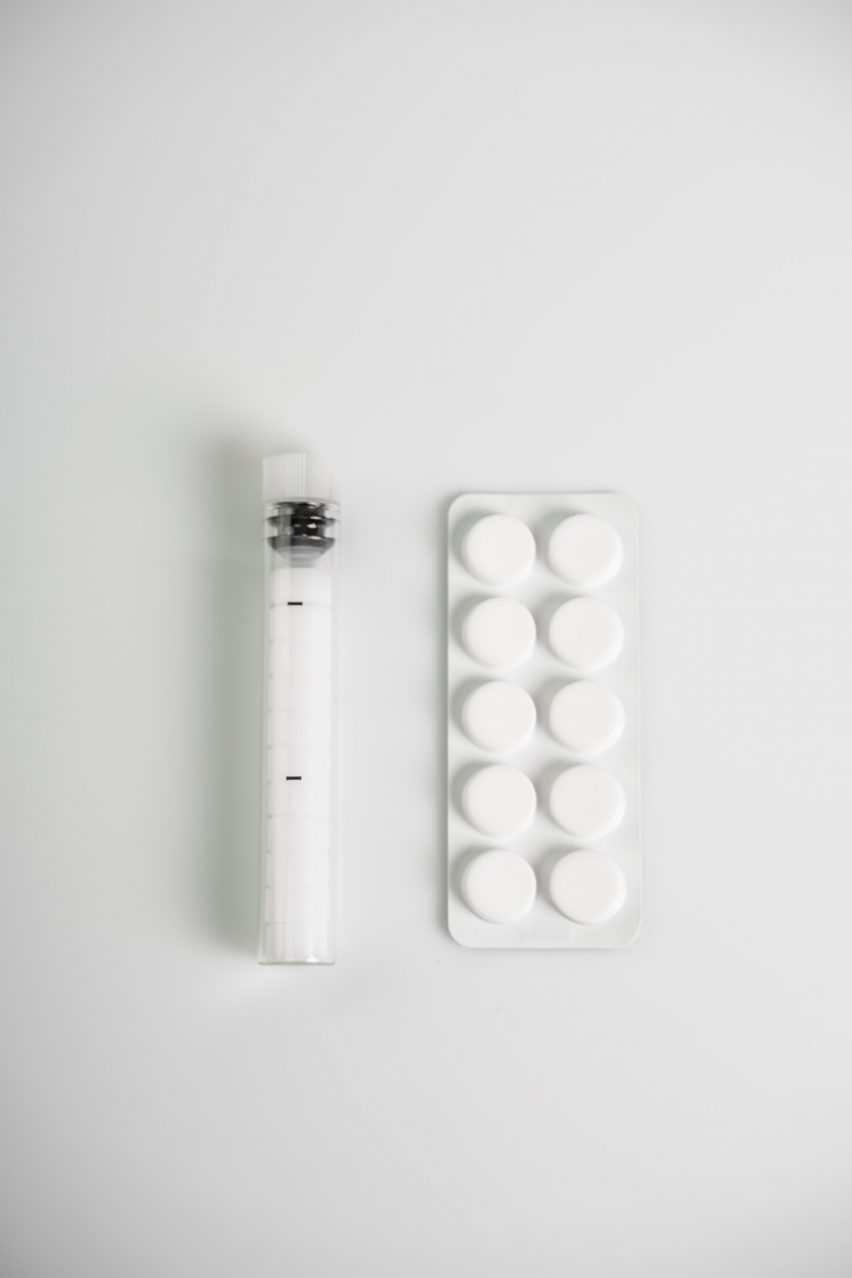
"Glass has two main selling points in a cyclical system: its longevity and its recyclability," said Lund University student Riccardo Centazzo."It is an impermeable material with high corrosion and temperature resistance that can also be exceptionally hard."
He added: "It can be produced using widely available resources, melted down and endlessly re-formed to make new products without a substantial loss of material or quality."
The polymers in plastic, on the other hand, degrade a little every time they are recycled, meaning they need to be mixed with new, virgin plastic to remain viable.
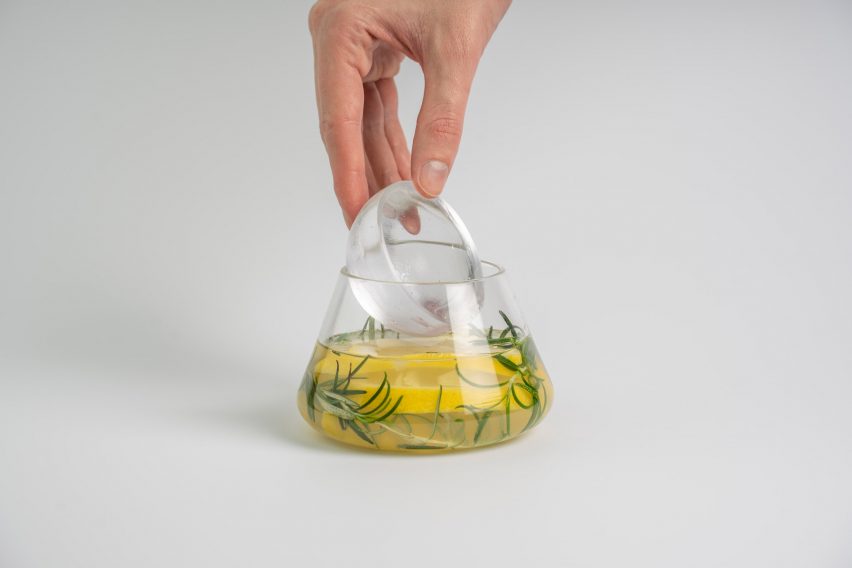
Working with this more circular material, each student was tasked with identifying and overhauling one wasteful product
Centazzo's project is a system of tiles that makes use of the insulating properties of glass to replace the vast amount of mixed plastics normally used to encase electrical wires in the home.
The tiles would be attached to the wall using a backplate. Its internal pattern allows wires to be neatly organised before they are safely enclosed behind a removable front face.
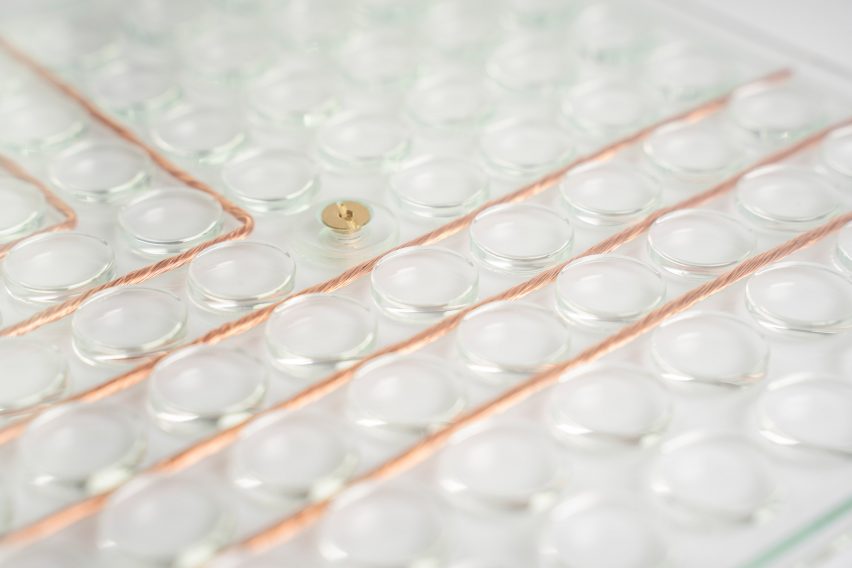
"It utilises no plastic or hybrid materials and is much more resistant to temperature, corrosion and rodents," he told Dezeen.
"By moving the wiring from inside the walls to their surface, they are easier to access for maintenance or modification without having to damage walls or replace the whole system. If a house is demolished, the tiles can easily be reused or recycled."
Another student encased coloured glass offcuts – which are harder to recycle due to the chemicals used to dye them – within clear glass to create decorative, Terrazzo-like tiles.
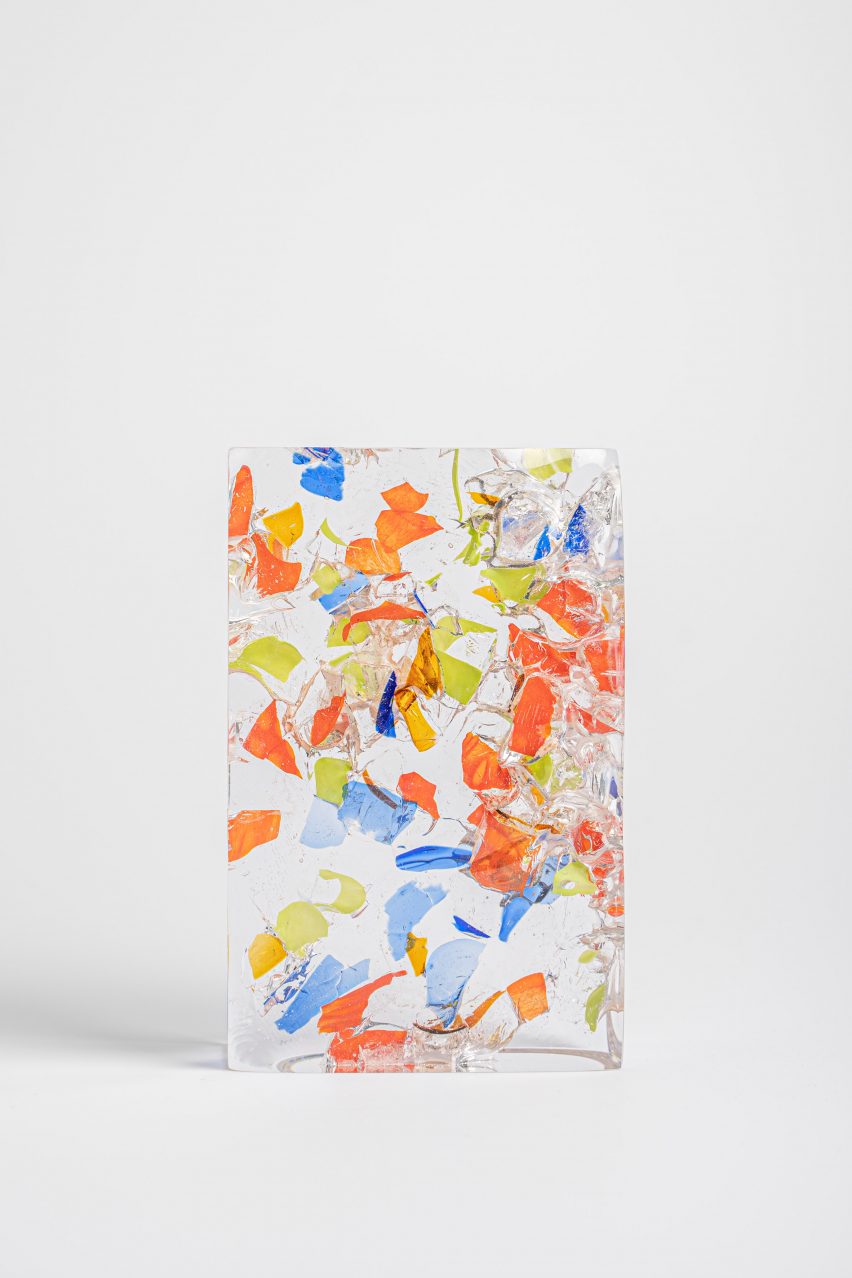
Others turned their attention to the personal care industry, designing packaging that would facilitate a keep-and-refill system. Customers would hold on to their glass containers and top up everything from make-up to cleaning products in the shop.
Jaxon Pope created a series of glass vials that could be used as an alternative to the throwaway blister packs in which medication is commonly sold.
In the system Pope is proposing, pharmacies would receive medication in bulk before portioning it out into these vials according to the needs of each customer.
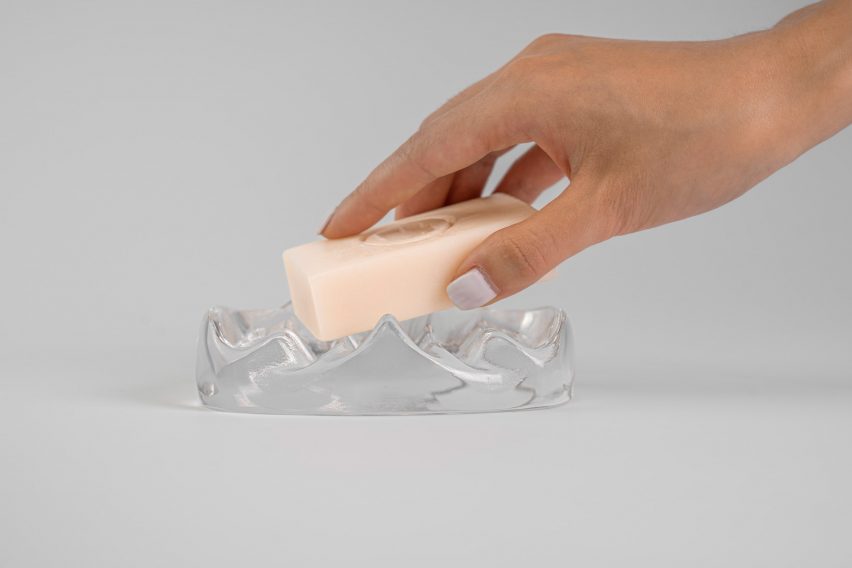
"The medicine is initially purchased with an additional cost for its packaging and can then be returned to the pharmacy for a refund or refilled without an additional package charge," he explained.
"Used vials are sent to a cleaning facility to be industrially cleaned and a vial that is considered too scratched can be sent back to the manufacturer to be melted down and used in the production of new vials."
Different coloured scales on the side of each vial help the pharmacist fill in the right doses, while the lid is made from recyclable plastic to create an airtight seal.
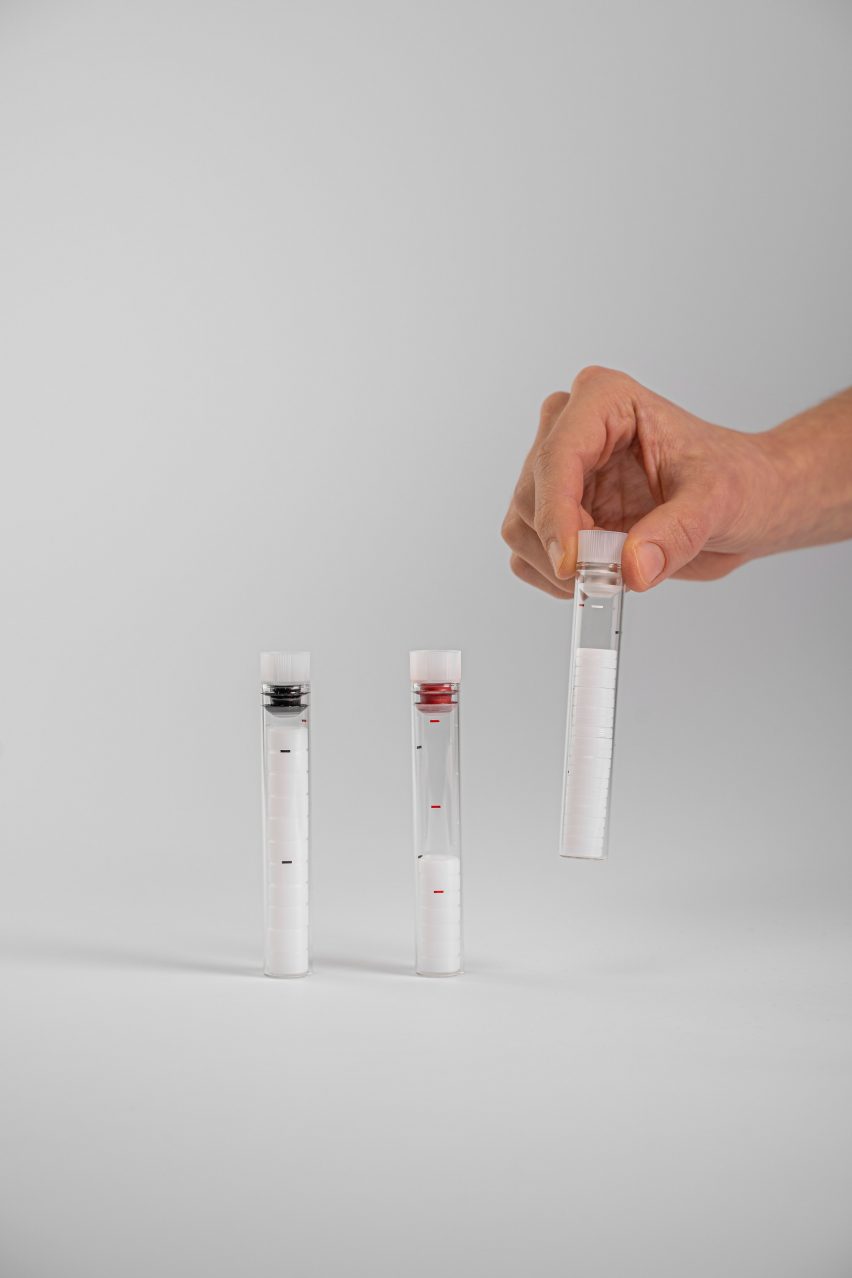
As food packaging is a major contributor to the plastic waste crisis, various projects proposed more sustainable alternatives.
These include a glass container that uses water channels to keep its contents from oxidising, and a loose-leaf teapot to replace single-use bags.
Julius Nobling, meanwhile, created a series of vases in different shapes and sizes, to draw attention to the little-known fact that various vegetables can easily be re-grown at home with nothing but scraps and stumps that would otherwise have gone to waste.
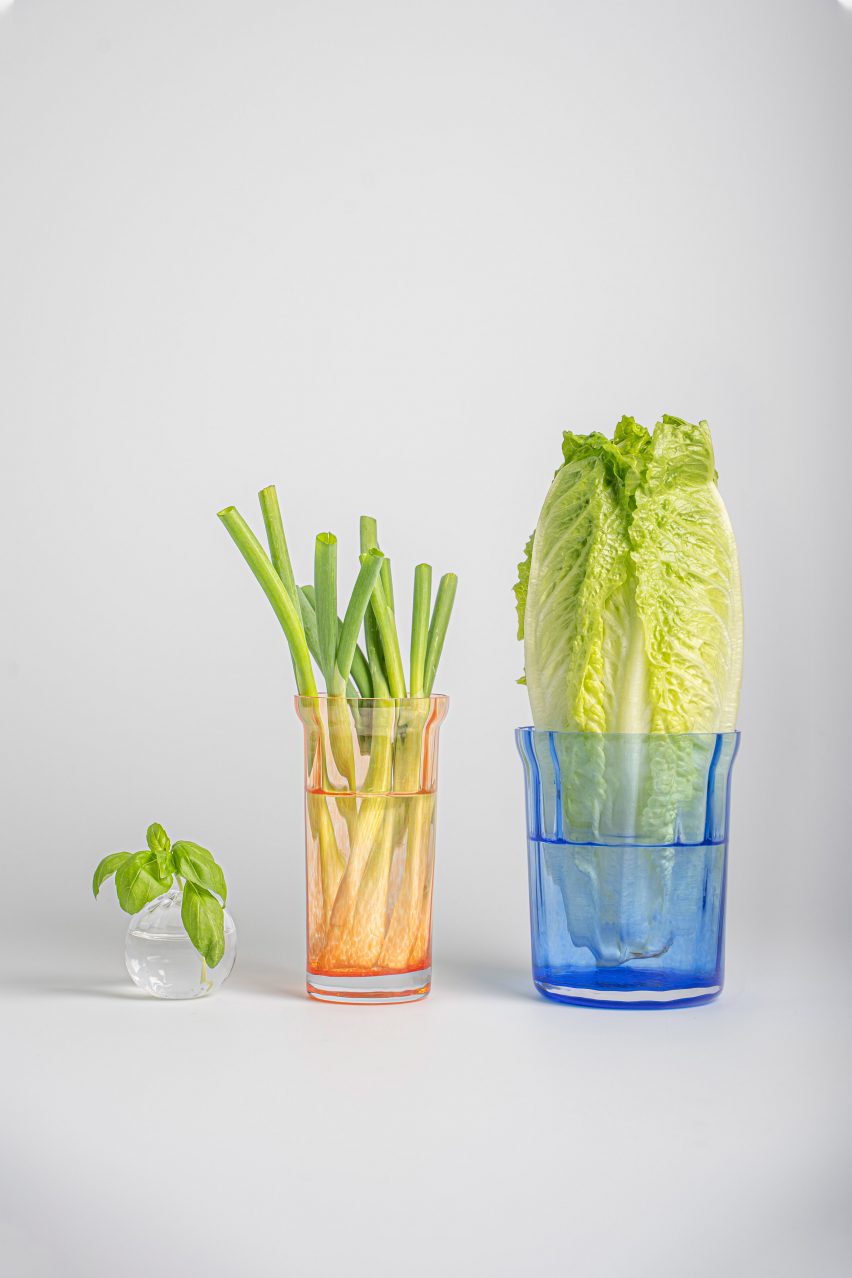
"I created a thin, long vase for things like leeks and spring onions so that they could grow straight," he explained. "The round one is meant for herbs like basil or coriander and has a small opening so that the cutting can fit easily without falling."
"I'm hoping that, by making the vases elegant and decorative, it will make users feel more comfortable with growing plants that aren’t typically perceived to be beautiful."
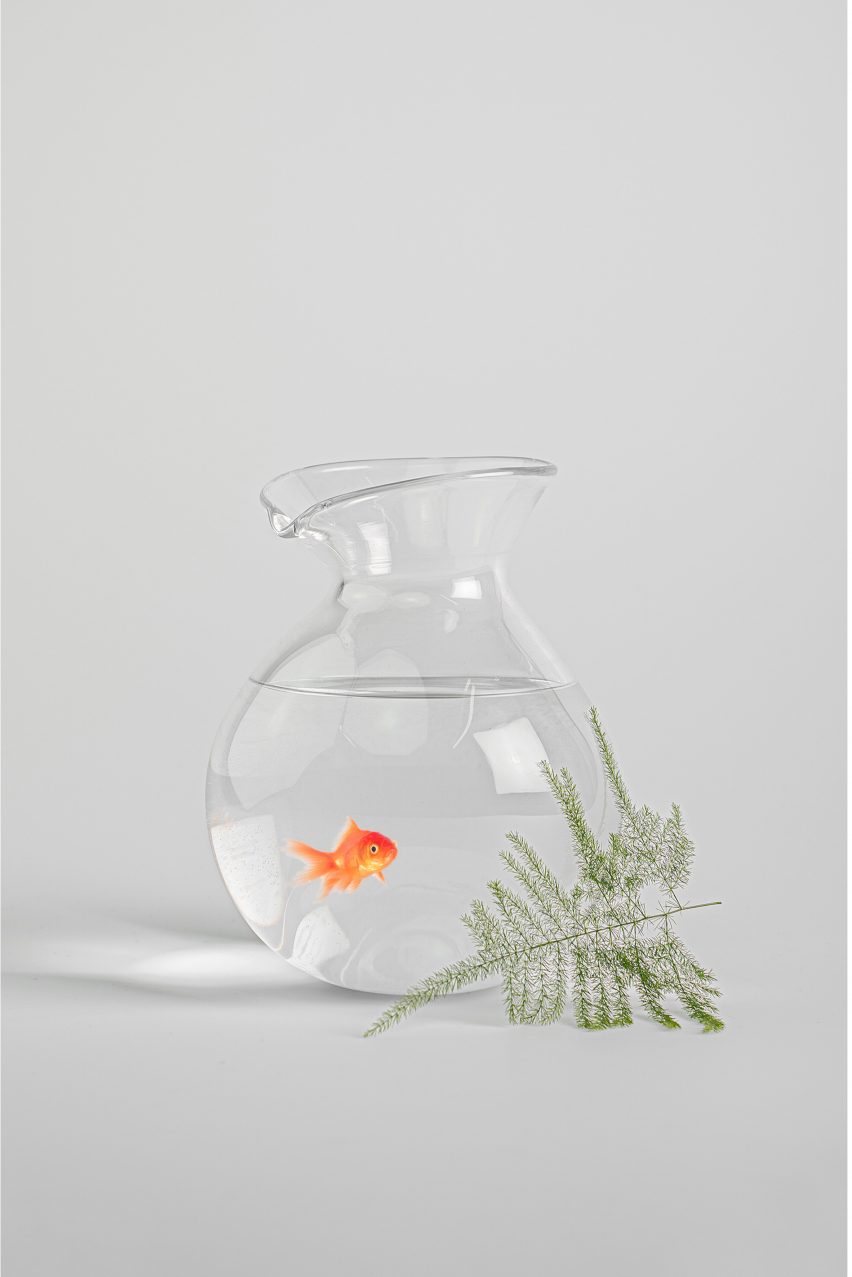
Another project intent on repurposing waste comes from Gao Ziyu, who designed a fishbowl that doubles up as a watering can.
In this way, the potassium, phosphorous and nitrogen that build up in the water over time aren't flushed down the drain when the water gets changed, but instead used to help plants grow.
Circularity, which involves eliminating waste and pollution while sustaining natural systems, was a big topic at Stockholm's Furniture & Light Fair. The award for best standing going to Note Design Studio's re-usable design for furniture brand Vestre.
The fair is part of the wider Stockholm Design Week, which also saw design studio Form Us With Love launch a mix-it-yourself hand soap that almost entirely eliminates plastic waste.